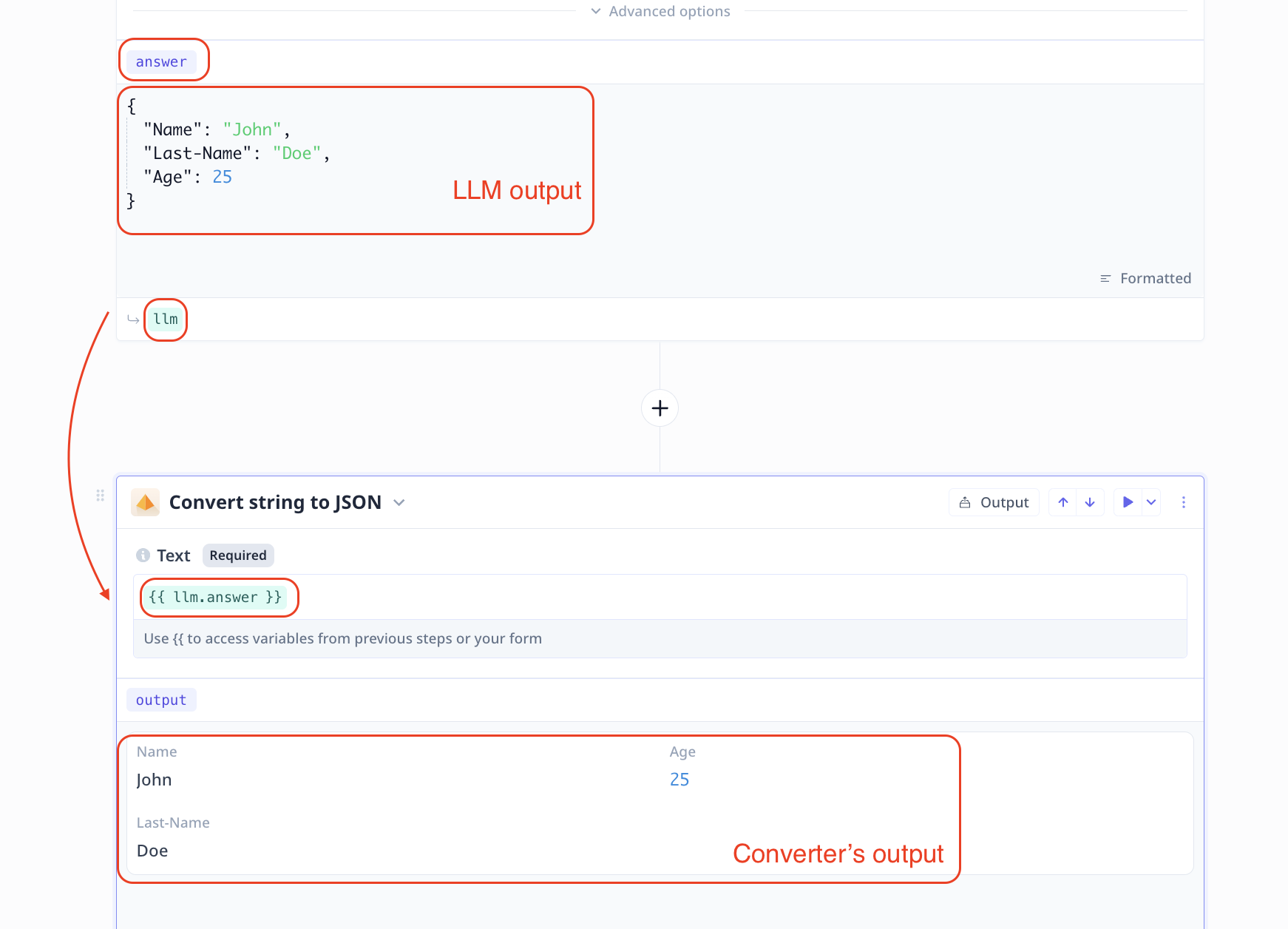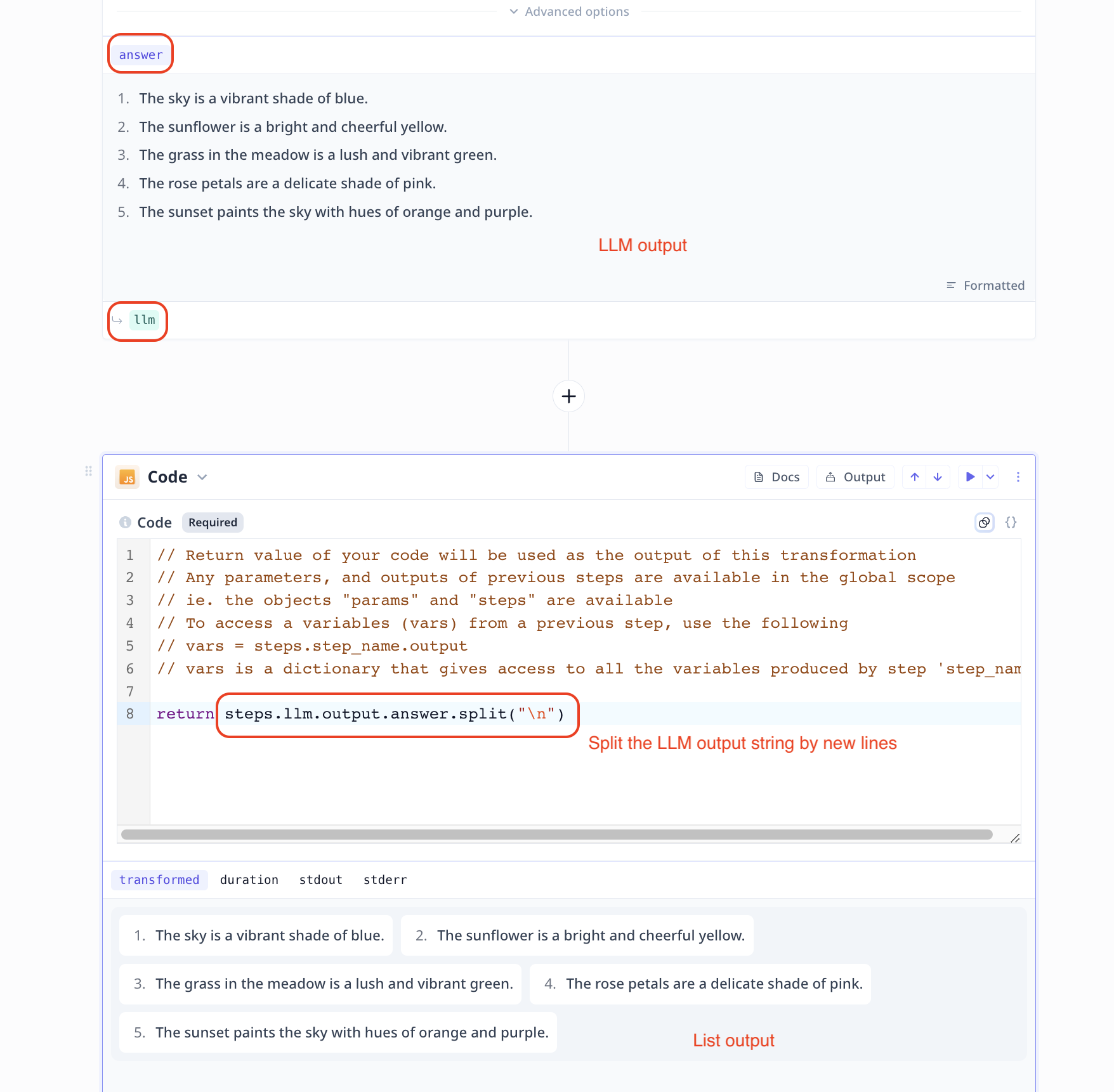An LLM step produces an output based on the provided inputs and the instruction that the model was given
in the prompt.
It is important to know even if your instruction says “produce a list of items”, “generate a JSON object”
or “write me a number between x and y” the output is always a string that only resembles a list, a JSON
or a number.
LLM outputs are always of type string. So even if they resemble a list, a JSON object, a number or a Boolean, make
sure to convert the output from string to the actual type when necessary.
person["Age"].
person = {
"Name":"Jack",
"Last name":"Smith",
"Age":28
}
'person = {\n"Name":"Jack",\n"Last name":"Smith",n"Age":28\n}'
String to JSON
When instructing an LLM to generate a JSON object, it is recommended to also set up the
is_json validator.
Next, use a Convert string to json.
All you need to do is to feed the LLM answer to the convertor component that generates the
mapping JSON.

String to list
Use a coding step (JavaScript or
Python) to take care of the conversion.
All you need to do is to feed the llm answer to your code step, apply the change
(e.g. split(separator) in JavaScript) and return the value.

String to Numbers or Booleans
Use a coding step (JavaScript or
Python) to take care of the conversion.
All you need to do is to feed the llm answer to your code step.
For numbers apply the parser (e.g. parseInt(string-value) in JavaScript) and return
the results.
For Booleans, you can simply use a conditional statement (if ... else ...) to return
the corresponding Boolean value (True or False). 


